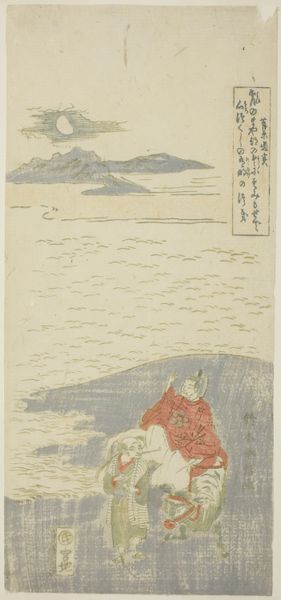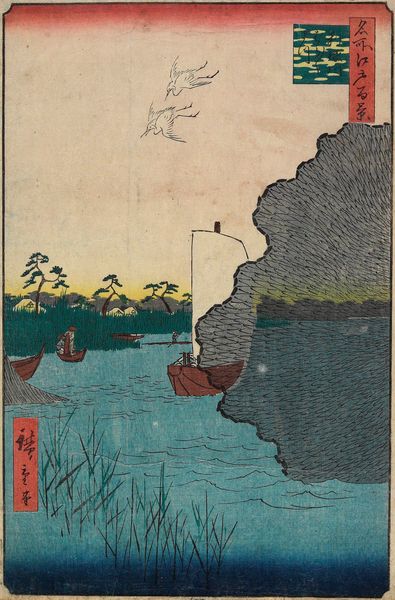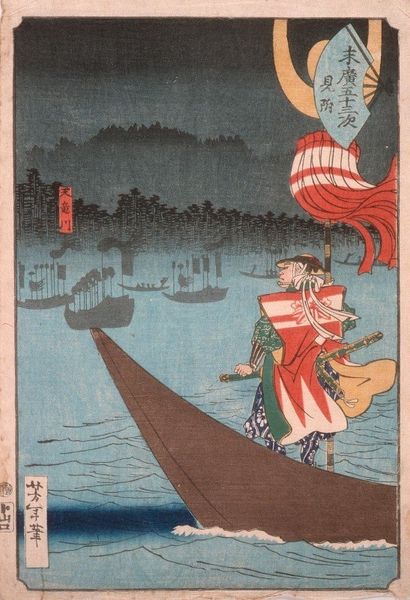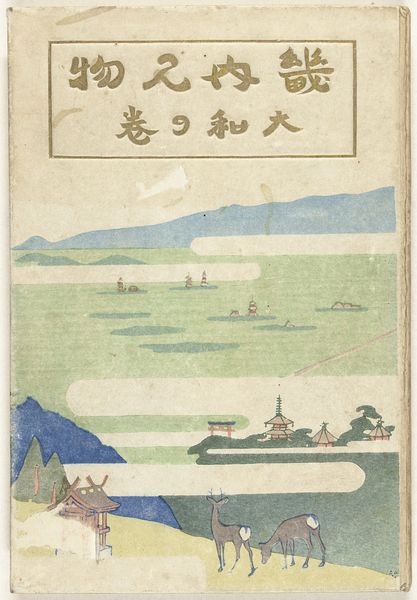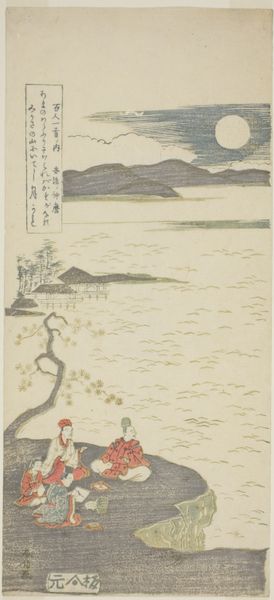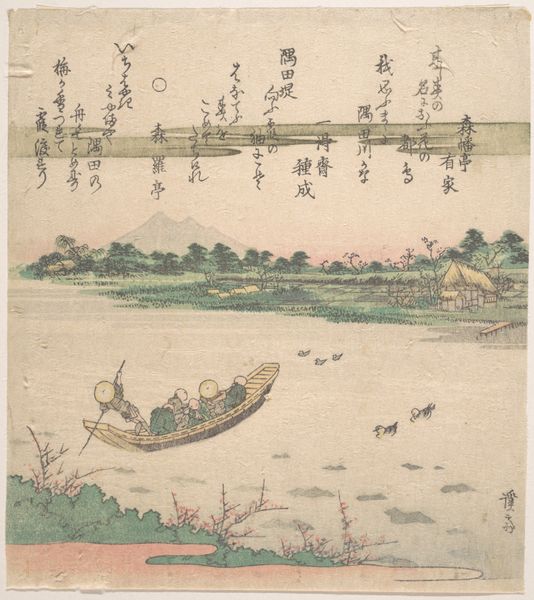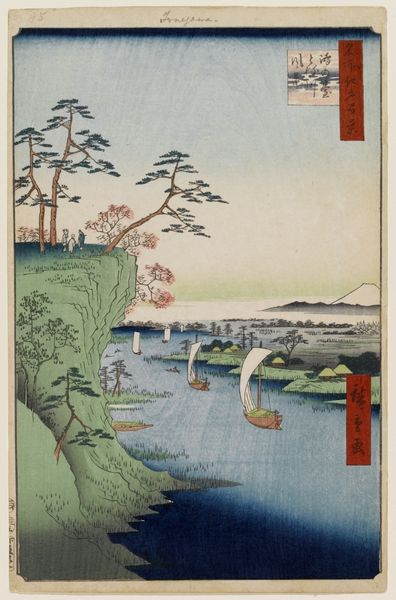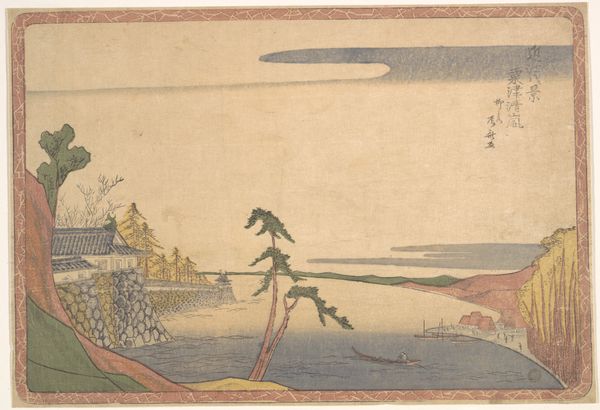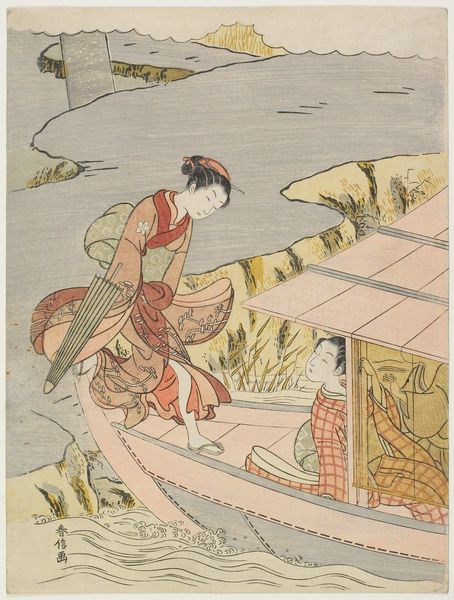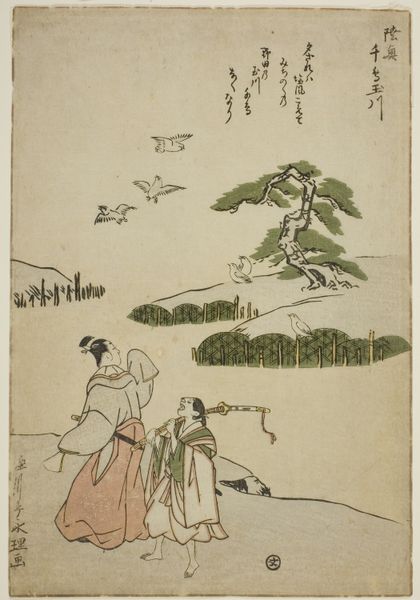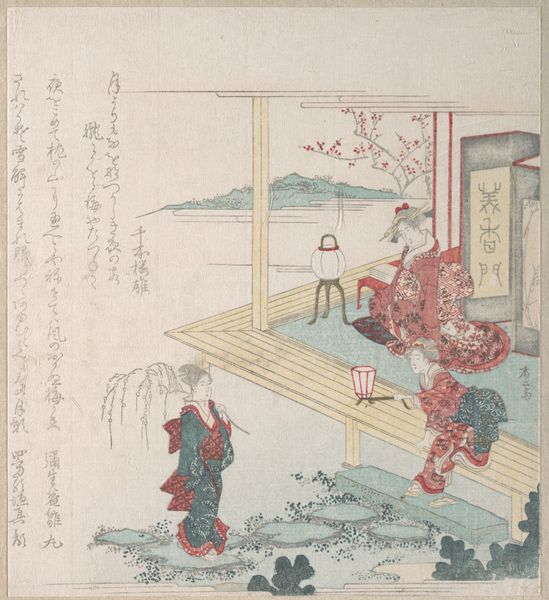
The Poet Ariwara no Narihira on the bank of the Sumida River c. 1764
0:00
0:00
drawing, print, watercolor, ink
#
drawing
#
water colours
#
ink painting
# print
#
asian-art
#
landscape
#
ukiyo-e
#
figuration
#
watercolor
#
ink
Dimensions: 12 1/2 × 5 5/8 in.
Copyright: Public Domain
Torii Kiyomitsu made this woodblock print, "The Poet Ariwara no Narihira on the bank of the Sumida River," in Japan during the late eighteenth century. It visualizes a scene from "The Tales of Ise," a collection of waka poems and associated narratives from the Heian period. Prints like these were popular amongst the merchant classes of Edo-period Japan. They reflect a growing interest in classical literature and the arts amongst those who were excluded from traditional aristocratic culture. The image creates meaning through visual codes that would have been familiar to contemporary viewers, such as the stylized landscape, the elegant figures, and the calligraphic text. The print can be read as a self-conscious assertion of cultural values by the merchant class in a rigid social hierarchy. As art historians, we can examine "The Tales of Ise" and other literary sources to better understand the cultural context in which Kiyomitsu was working and reflect on how art can challenge existing social norms.
Comments
No comments
Be the first to comment and join the conversation on the ultimate creative platform.
